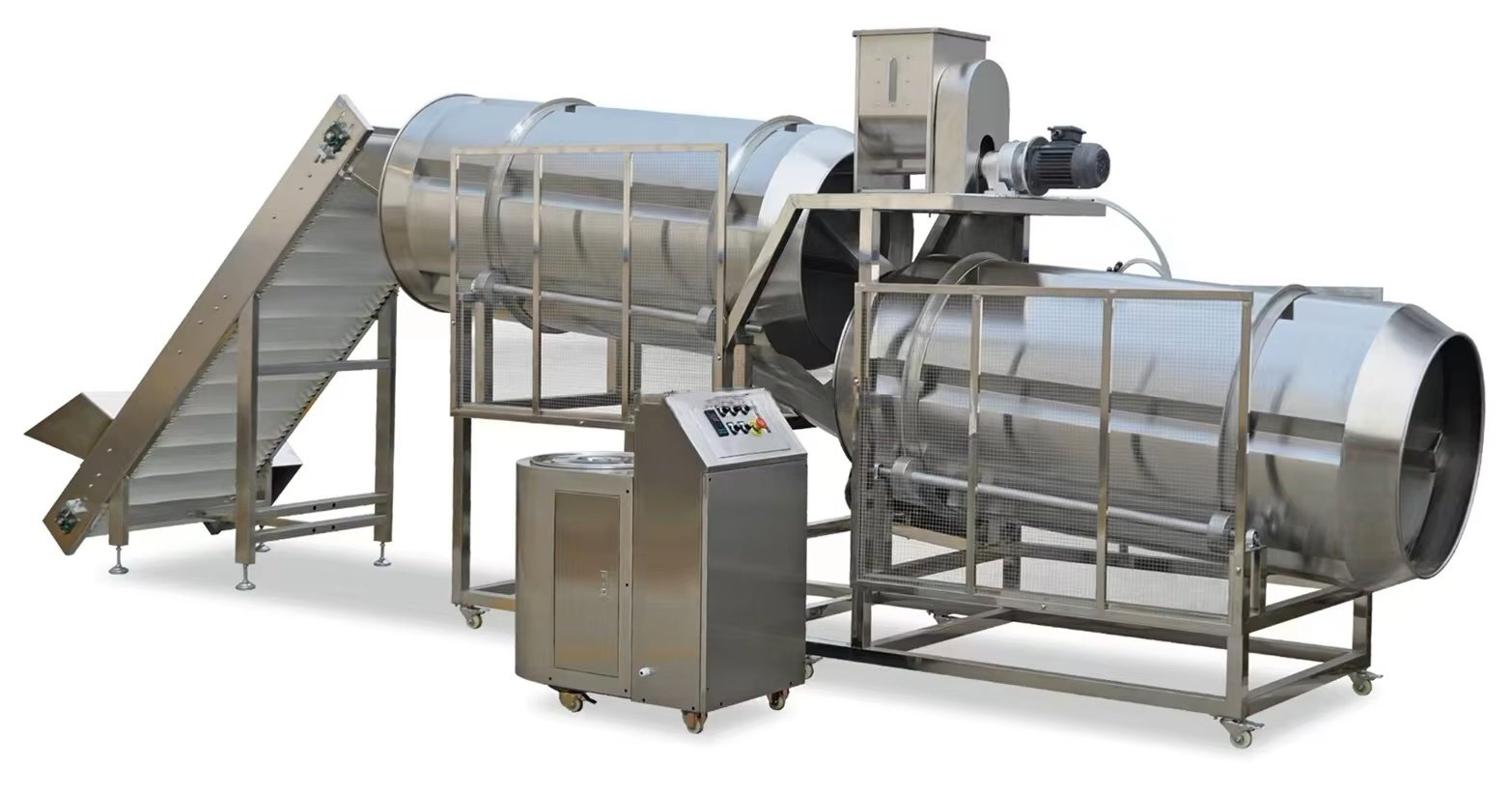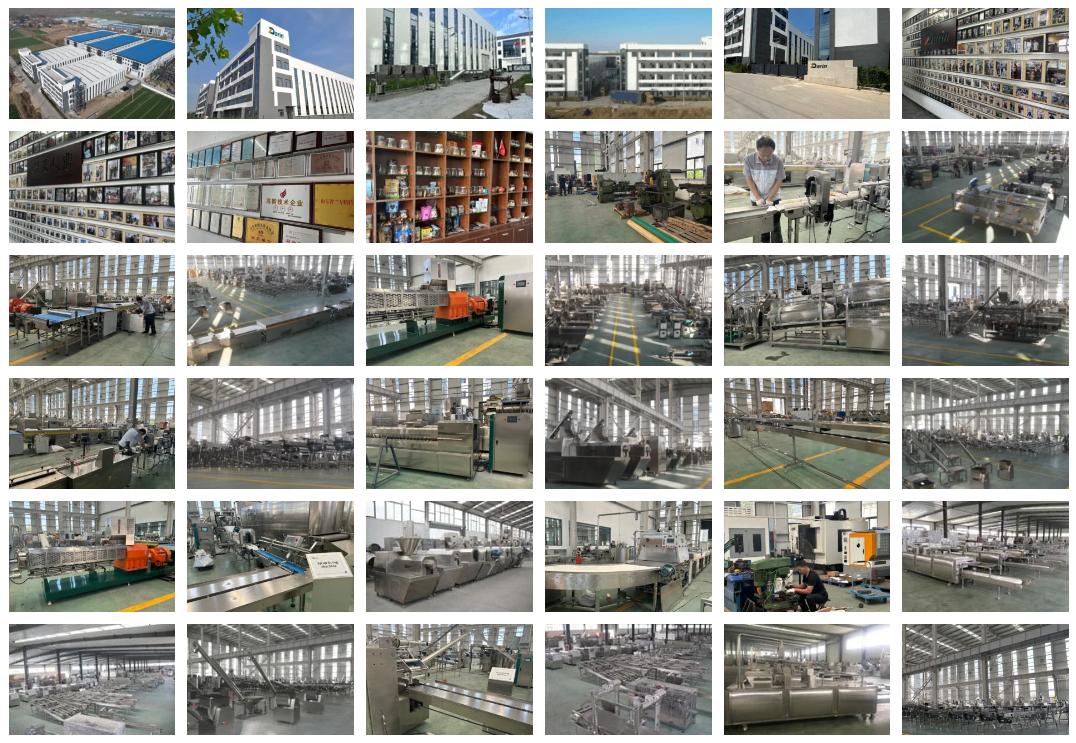
In modern pet food production, achieving a streamlined, fully automated process is not just a matter of convenience—it’s a necessity. Many manufacturers face the challenge of integrating new extruders with existing upstream or downstream systems. Incompatibility can lead to material wastage, production downtime, or even system damage. Fortunately, today’s advanced extruder technology—such as the models produced by Darin Machinery—is engineered to work harmoniously with a wide range of processing equipment. In this article, we explore how this compatibility is achieved and what users should know before integration.
Yes, most modern extruders—especially those designed for pet food production—are engineered for seamless integration with upstream and downstream equipment like mixers, feeders, dryers, coolers, and flavoring systems. These systems are often connected through synchronized control interfaces (like PLCs and HMIs), universal feeding/discharge ports, and modular mechanical structures to ensure smooth data and material flow throughout the production line.

This compatibility is not just a technical feature—it’s a productivity guarantee. By enabling automated coordination between components like mixers, conveyors, extruders, and dryers, manufacturers can eliminate bottlenecks and significantly reduce manual intervention. Read on to understand how this integration works in detail and what you need to consider before buying an extruder for your processing line.
Modern food extruders can operate independently and are also designed to integrate with multiple types of processing equipment.Verdadero
Food extruders are modular and equipped with standard interfaces that support integration with mixers, dryers, coolers, and flavoring machines.
Integration Capabilities of Extruders in Pet Food Processing
Modern extruders, especially twin-screw models, are no longer standalone machines. Manufacturers such as Maquinaria Darin design their extruders to be part of a complete pet food processing line. Here’s a breakdown of typical upstream and downstream integration capabilities:
Typical Processing Line Flow
| Escenario | Equipo | Integration Notes |
|---|---|---|
| Preparación de los ingredientes | Mixer / Grinder | Mixer feeds pre-hydrated meal into the extruder via conveyor or vacuum loading system. |
| Alimentación | Feeder (volumetric/gravimetric) | Feeder speed is synchronized with extruder throughput for continuous flow. |
| Extrusión | Single or Twin-screw Extruder | Core processing unit; parameters controlled by PLC/HMI. |
| Secado | Secador de cinta | Output from extruder is transferred directly onto dryer mesh conveyor. |
| Recubrimiento y saborizantes | Drum Coater / Spraying System | Sprays fats, palatants, and nutrients post-drying. |
| Enfriamiento | Cooler | Reduces product temperature before packaging. |
| Envasado | Weighing + Packing Machine | Interfaces with conveyors or buffer bins to enable automatic bagging. |
Diagram of Modular Integration (Simplified Flow)
| Equipo | Connectivity Type | Common Interface |
|---|---|---|
| Mixer → Feeder | Mechanical + Sensor Control | Auger / Belt Conveyor |
| Feeder → Extruder | Controlled by Extruder PLC | Digital (MODBUS/PROFINET) |
| Extruder → Dryer | Mechanical Discharge + Sensors | Conveyor, Vibratory Feeder |
| Dryer → Coating System | Belt Discharge + PID Sensors | Linked Conveyor |
| Coating → Cooling | Open or enclosed transition | Stainless Troughs / Belts |
| Cooling → Packaging | Conveyor with Flow Control | Load Cell / Level Sensors |
Key Factors for Compatibility
1. Standardized Connection Ports
Darin extruders feature standardized input/output interfaces that match common screw conveyors, bucket elevators, and vibratory feeders. This reduces customization needs and speeds up installation.
2. Intelligent PLC and HMI Synchronization
A single HMI can control the entire line when configured properly. Darin uses Siemens or Schneider PLC systems, allowing for programmable synchronization across all equipment using digital communication protocols (e.g., PROFIBUS, PROFINET, MODBUS TCP/IP).
3. Consistent Throughput Design
All downstream and upstream equipment should match the extruder's output capacity (kg/h). For instance, a twin-screw extruder rated at 300 kg/h requires dryers and flavoring systems that can handle equal or slightly higher throughput.
4. Mechanical Integration and Stability
The mechanical alignment—especially between feeder, extruder, and dryer—is critical. Darin uses adjustable platforms, stainless-steel enclosures, and anti-vibration feet to ensure that integration is physically stable and aligned.
5. Automation and Data Feedback Loops
Sensors across the line (temperature, humidity, pressure, product weight) feed data back to the main controller, which allows for auto-adjustment of speeds and settings, maintaining product quality and minimizing human error.
6. Customizable Layouts for Plant Efficiency
Darin extruders can be integrated in both linear and L-shaped production lines, depending on your plant space. This flexibility ensures you can scale up or reconfigure your production line as needed.
Case Study: 5-Ton/Day Pet Food Line in Poland
In 2023, Darin installed a complete 5-ton/day pet food extrusion line in Poznań, Poland. The customer required integration of the following systems:
- Horizontal ribbon mixer with vacuum feeder
- Twin-screw extruder (DSE85 model)
- Continuous dryer with 3-layer mesh conveyor
- Rotating flavoring drum with oil spray system
- Compact cooler with air circulation
- Fully automatic weighing and packaging unit
All components were controlled by a single HMI, with real-time feedback from thermocouples and infrared sensors. The line achieved 98% uptime, with minimal manual intervention.
Recommended Equipment Pairings with Darin Extruders
| Extruder Model | Ideal Mixer Model | Dryer Model | Flavoring Unit |
|---|---|---|---|
| DSE65 Twin-Screw | RM-300 Ribbon Mixer | CD-3 Conveyor Dryer | FD-500 Flavoring Drum |
| DSE85 Twin-Screw | RM-500 Paddle Mixer | CD-6 Conveyor Dryer | FD-800 Spray Coater |
| DSE90 High Output | RM-750 Vacuum Mixer | CD-8 High-Temp Dryer | FD-1000 Auto Coater |
These configurations ensure synchronized output flow, accurate control, and consistent product quality from mixing to packaging.
Summary: What You Should Do Before Integration
- Confirm Output Capacity – Match extruder output to all other systems in kg/hour.
- Verify Interface Protocols – Ensure PLCs and HMIs use compatible communication formats.
- Check Layout Fit – Measure available space and plan machine placement.
- Align Control Systems – Consider centralizing control into one interface for efficiency.
- Plan for Scalability – Choose modular systems that can be expanded or reconfigured later.
Reflexiones finales
Extruder compatibility is no longer a luxury—it’s a strategic necessity for any food manufacturer looking to scale with precision and efficiency. Darin Machinery’s extruders are designed with this modular, plug-and-play philosophy in mind. Whether you're upgrading part of a line or building a new facility, knowing how to align extrusion equipment with mixers, dryers, and packers is the key to your success.
Contact Us for Turnkey Pet Food Production Solutions
Looking to build or upgrade a pet food processing line? Contact Maquinaria Darin—China’s leading manufacturer of pet food extruders and integrated production lines. We offer free layout planning, customized equipment configurations, and on-site installation support.
📩 Email: darin4@darin.cn
🌐 Website: www.petreatsmachine.com | www.darin.cn
Let’s build the future of pet food manufacturing—together.

Preguntas frecuentes
- Q1: How do I know if an extruder is compatible with my existing equipment?
- A1: Check the mechanical and electrical interface specifications, such as inlet/outlet diameters, power supply requirements, and control system compatibility. Consult your extruder supplier for integration guidelines.
- Q2: Can extruders be used in a fully automated processing line?
- A2: Yes, modern extruders are designed for integration with automated feeders, conveyors, dryers, and packaging systems. Automation enhances consistency, reduces labor costs, and increases throughput.
- Q3: What upstream equipment is typically used with an extruder?
- A3: Common upstream equipment includes material mixers, ingredient feeders, and pre-conditioners. These help prepare raw materials to ensure consistent flow and texture before extrusion.
- Q4: What downstream equipment pairs with extruders?
- A4: Key downstream machines include dryers, coolers, cutters, coating drums, and packing machines. These ensure the extrudate is finished, flavored, and packaged correctly.
- Q5: Are extruders customizable for different production lines?
- A5: Yes, most manufacturers offer modular or customizable extruders that can be adapted with various screw designs, dies, control systems, and interfaces to match specific processing needs.
Referencias
- How Food Extrusion Works – https://www.extru-techinc.com - Extru-Tech
- Food Processing Line Integration – https://www.buhlergroup.com - Grupo Bühler
- Pet Food Manufacturing Systems – https://www.andritz.com - Andritz
- Twin-Screw Extrusion Guide – https://www.clextral.com - Clextral
- Extrusion Equipment Overview – https://www.bakerperkins.com - Baker Perkins
- Processing Line Automation – https://www.gea.com – GEA Group
- Dryers and Coolers for Extruders – https://www.jbtc.com – JBT Corporation
- Coating Systems for Extruded Products – https://www.spxflow.com – SPX Flow
- Complete Pet Food Lines – https://www.darin.cn – Darin Machinery
- Extruder Compatibility Tips – https://www.feedstrategy.com - Estrategia de alimentación









